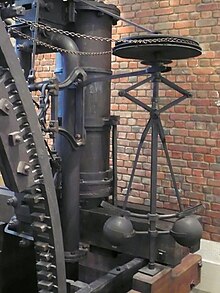Control engineering
Many processes in nature regulate themselves. This means that based on some measurement, they change a setting or a variable, so that it is more or less constant. Examples in nature are animals that have a constant body temperature, blood pressure, or blood sugar level. The predator-prey equations are another example.
Control engineering is about the same thing: Building a system that can regulate one parameter (usually: keep it constant), often with a feedback loop that allows the value of the parameter to be measured. It is a field of engineering. It uses mathematical models of dynamic systems, and control theory. If they are well-designed, the controllers will cause the system to behave in some desired, predictable manner. Modern control engineering is closely related to electrical, electronic, and computer engineering. As engineering continues to develop, control engineering is often wanted.

In most cases, control engineers make use of feedback when designing control systems. For example a machine's speed is continuously checked and fed back to the system, which then adjusts the motor's spin power. Recently, control systems are also used in nanotechnology. In chemical engineering, control engineering is known as process control. Many advancements in science, finance, and even human action, can be attributed to control engineering.
Many control systems rely on feedback. However, there are also control systems that work without feedback. Such a system is known as an open-loop control. An open-loop controller, also called a non-feedback controller, relies only on the model and the input signal fed to the system. An example of open-loop control can be found in washing machines, which work by running pre-programmed cycles but, most importantly, do not rely on any measurements of the speed of the barrel or water volume to adjust the machine.